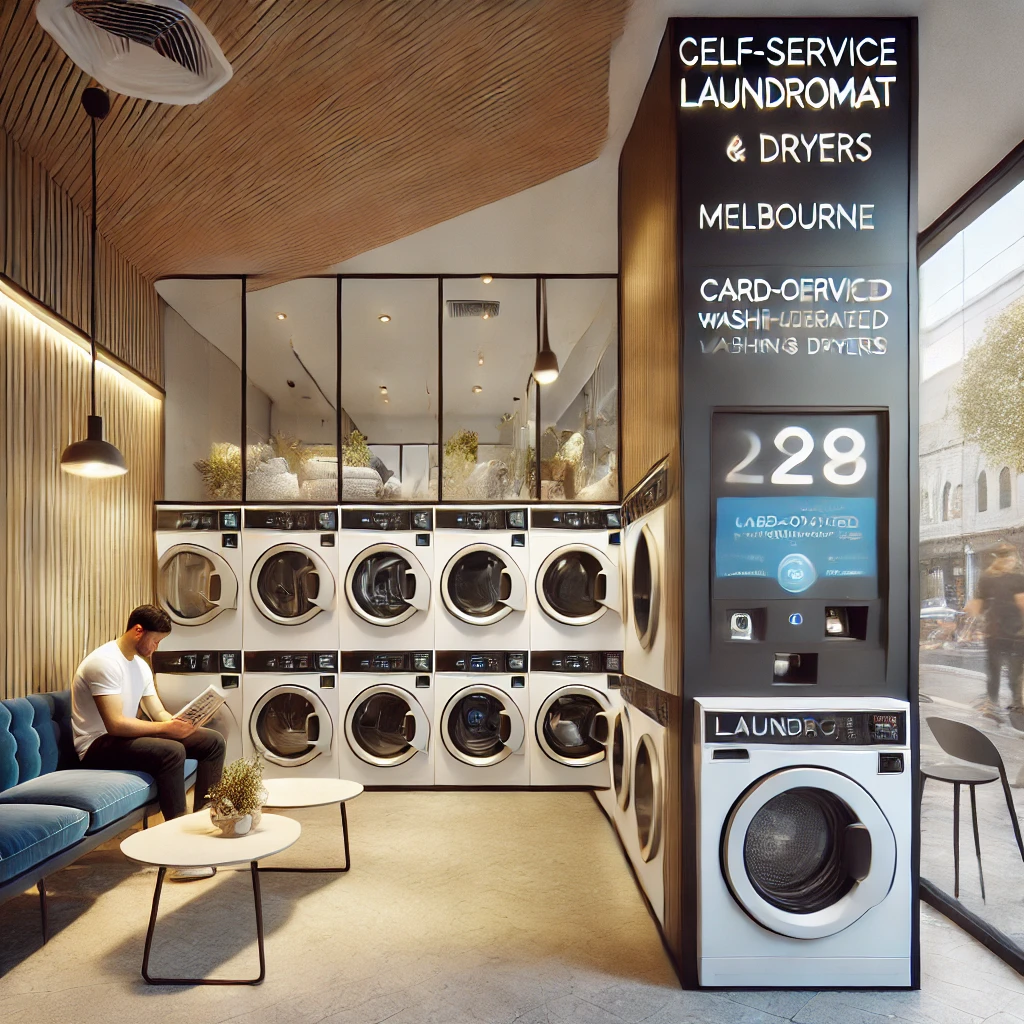And why smart Laundry Room Management keeps them working safely and effectively
Commercial laundry operations aren’t just about water and heat. Behind the clean linen is a quiet army of chemicals—each one playing a specific role to remove stains, protect fabric, and meet hygiene standards. If you’re managing a multi-client facility, a shared laundry space, or a mobile route system, handling these chemicals properly is a major part of effective Laundry Room Management.
Understanding how each type works—and where it fits into your workflow—helps you clean more efficiently, avoid damage, and control costs. It’s also critical to workplace safety and regulatory compliance, especially in aged care, health, and hospitality settings.
Let’s break down the seven primary laundry chemicals used in professional settings—and how route operators and facility managers can ensure they’re being used correctly.
1. Detergents: The Core Cleaning Agent
Detergents are the workhorse of any laundry process. Their job is to lift dirt, oils, and stains from fabric fibres so they can be rinsed away. In commercial settings, detergents are usually alkaline-based and come in liquid or powder form.
Proper dosing is essential. Too much, and you risk residue or grey linen. Too little, and you won’t remove soils effectively. In a shared laundry setup, incorrect detergent use by one tenant can impact machine hygiene and wash results for the next.
That’s where scheduled servicing and dosing calibration come in—essential elements of any well-run What are the 7 types of laundry chemicals? system.
2. Alkalis: Boosting Detergent Power
Alkalis are added to enhance the detergent’s ability to remove oils and fats, especially in heavily soiled loads. They adjust the pH to break down tough organic material and emulsify grease-based stains.
Used incorrectly, though, alkalis can damage delicate fabrics or cause skin irritation. That’s why route operators managing commercial accounts (such as gyms or cafés) often handle alkali pre-mixing offsite, reducing risks at the client end.
Clear labelling, storage, and staff training are all part of safe chemical handling in professional What are the 7 types of laundry chemicals? operations.
3. Bleach: For Disinfection and Whitening
Bleach is used to sanitise and remove tough stains from white linens. Chlorine bleach is effective but harsh, while oxygen bleach (also called colour-safe bleach) offers a gentler alternative.
Overuse can cause yellowing or weaken fabric fibres. Underuse can leave pathogens behind—especially critical in healthcare or childcare facilities.
Operators following strict Laundry Room Management practices use automated dispensers to control bleach volumes, and may apply colour-coded protocols to separate bleach-wash items from coloured or delicate loads.
4. Neutralisers: Balancing pH After Washing
Once the detergent and alkali have done their job, a neutraliser is added to lower the fabric’s pH before it goes into the dryer. This prevents skin irritation and helps extend linen life.
It’s especially important in route-based systems where linen is reused frequently—such as in salons, gyms, or accommodation services.
Missing this step can lead to customer complaints about itchy towels or ‘chemical’ smells. Neutraliser dosing should be tracked as part of your What are the 7 types of laundry chemicals? checklist.
5. Softeners: For Texture and Finish
Fabric softeners coat fibres to reduce static and make items feel smoother. They’re especially useful for towels, robes, and sheets—but they can interfere with absorbency if overused.
In many commercial setups, softeners are applied sparingly, or only to specific items. The decision often depends on client preference, fabric type, or drying method.
This again highlights why detailed client records and cycle tagging matter—both key elements of organised Laundry Room Management.
6. Stain Removers: Spot Treatment and Pre-Wash Boost
Stain removers target specific types of marks—like wine, blood, oil, or ink. They’re applied before the wash cycle, either manually or through a soak system.
Using the right remover for the stain type is important. For example, enzyme-based products break down organic stains but may not be effective on ink or dye.
Route operators with high-volume clients often maintain a stain log, helping track recurring issues and reduce linen replacement costs. For reference, here’s a trusted guide to stain treatment protocols across commercial fabrics.
7. Sanitisers: Essential for High-Hygiene Loads
While bleach disinfects, it’s not always suitable for every load. Sanitisers can be added to the final rinse cycle to kill bacteria and viruses without damaging fabrics or colours.
This is crucial in aged care, medical, and childcare settings—where infection control standards require verifiable disinfection methods.
Route-based laundry services often use built-in sanitiser cycles at central facilities, ensuring safety while simplifying chemical handling at client sites.
Why Laundry Chemical Handling Should Never Be an Afterthought
Chemicals make your laundry service possible. But without proper management, they can cause more harm than good—damaging fabrics, irritating skin, or even breaching compliance standards.
That’s why the most successful commercial operations embed chemical control into their daily operations:
- Secure storage away from client areas
- Automated dispensing to reduce user error
- Staff training for chemical handling and PPE
- Clear MSDS access and compliance records
- Regular review of usage logs and supplier batch reports
All of this is core to safe, scalable Laundry Room Management.
Wrap-Up: Know Your Chemicals, Clean Smarter
Understanding the seven main types of laundry chemicals isn’t just for warehouse-scale laundries. Even small route operators or local pickup-and-delivery services benefit from knowing how to use the right products in the right way.
By building these products into a structured, well-managed workflow, you protect fabrics, staff, and clients—while also boosting efficiency and customer satisfaction.
In laundry, chemistry matters. But it’s the systems behind it that keep everything running clean.

